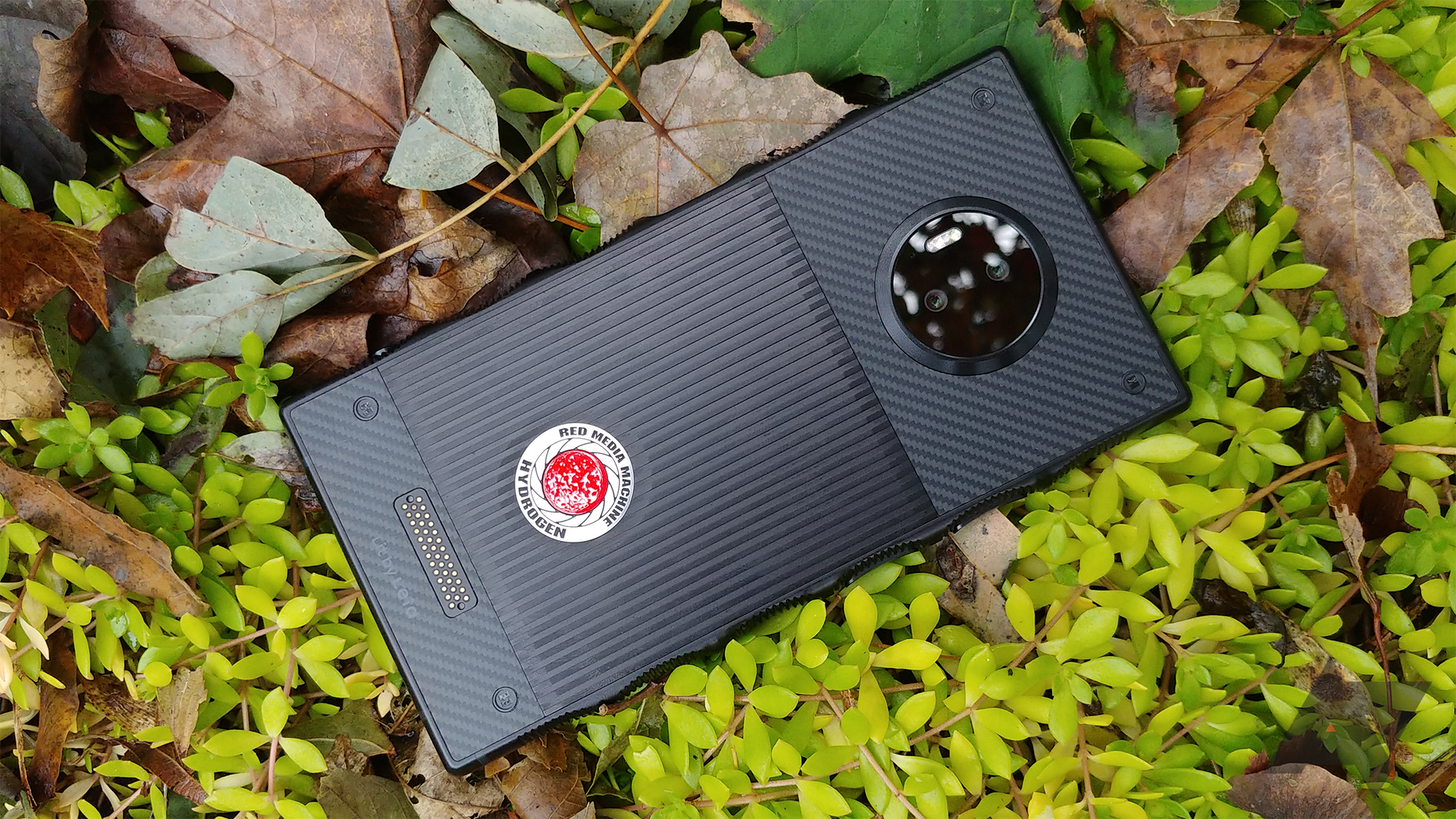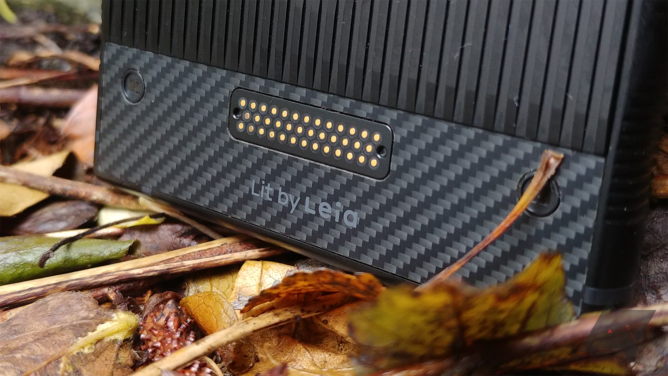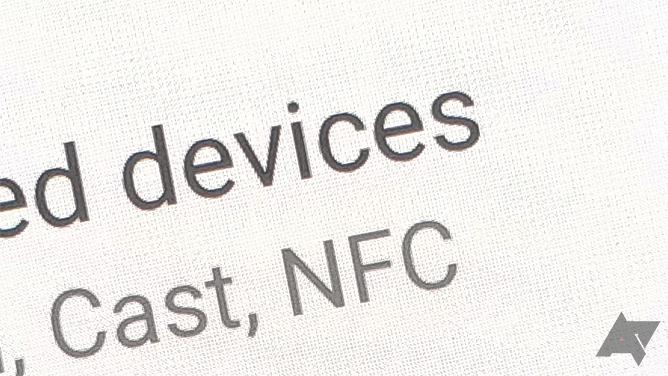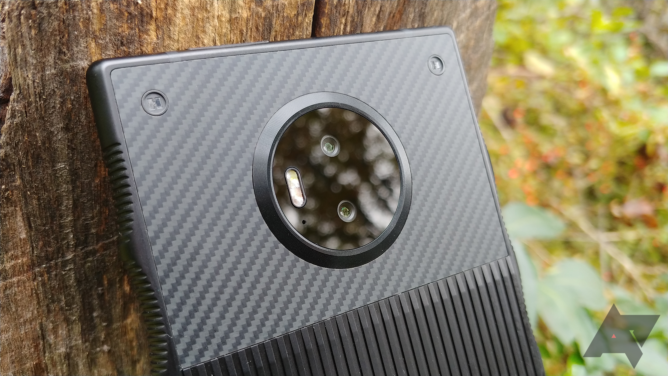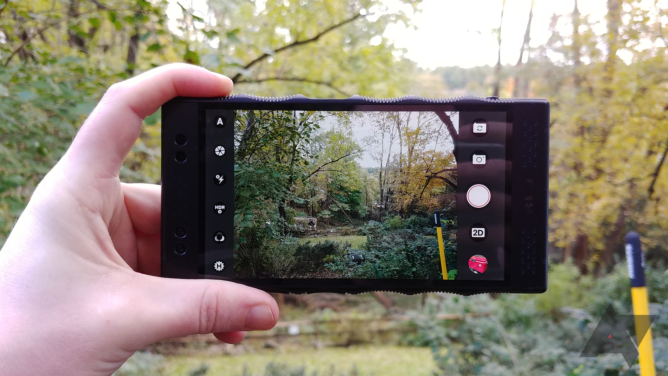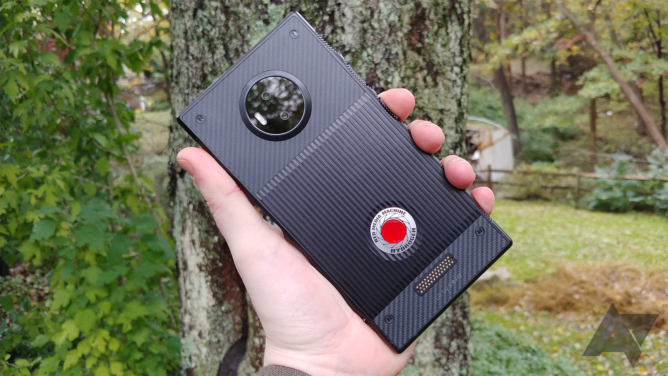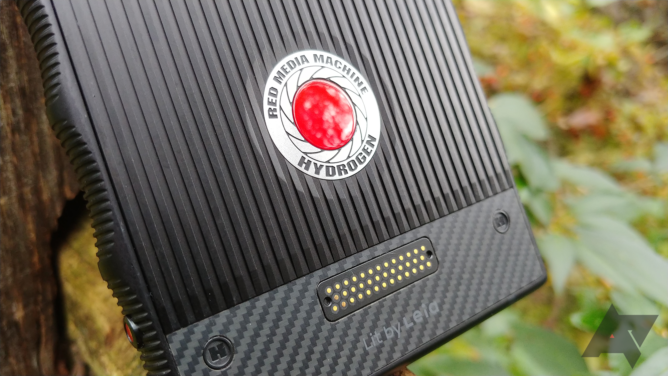Quick Links
For as long as there have been smartphones, there have also been weird smartphones. While mainstream models tend to keep things basic, giving you slightly faster and more feature-rich versions of devices that have come before, there are always those outliers that seem to remind us that there's room for variety in this industry yet: phones that fold, have sliding hardware, or take similar steps to set them apart from the rest of the pack.
When we first heard of the RED Hydrogen One back in 2017, it was immediately clear this was going to be another of those "weird" phones. The design was unconventional, the price steep, the presence of a Moto-style expansion port surprising, and word of a 3D autostereoscopic display had us wondering if we'd slipped back six years into some sort of time warp.
Would this bizarre-sounding phone ever make it off the drawing board? Could all those odd features possibly deliver? Over a year later, I've finally got my hands on the Hydrogen One, and have spent the past week putting it through its paces. It's certainly a very unique device, but also a confusing one, and despite carrier interest, one that's going to have a pretty tough time appealing to shoppers.
SPECS
|
Chipset |
Snapdragon 835 |
|
RAM |
6GB |
|
Storage |
128GB / 256GB, microSD expansion available |
|
Display |
5.7” autostereoscopic 4-View LCD 2560x1440 (515ppi) |
|
Battery |
4500mAh |
|
Camera |
Dual 12MP rear, dual 8MP front |
|
Headphone jack |
Yes |
|
Software |
Android 8.1 |
|
Measurements |
164.78 x 85.71 x 10mm, 263g |
|
Colors |
Black, shadow, titanium |
|
Ruggedization |
No IP rating |
|
Charging |
Fast charger, no wireless charging |
|
Networks |
AT&T and Verizon in the US |
|
Pricing |
Starting at $1,295 |
THE GOOD
|
4-View 3D effect |
I'm not going to lie — it's cool. While there are still a number of issues keeping it from being a slam-dunk, the 3D effect is definitely a step up from earlier-generation displays. |
|
Battery life |
Thanks to its big 4,500mAh capacity, the Hydrogen One delivers endurance that easily stretches across multiple days. |
|
Storage |
128GB is enough to store lots of space-hungry 3D pics and movies, and expansion is especially easy thanks to the no-tool-required microSD tray. |
THE NOT SO GOOD
|
Display |
While the 3D bit is interesting, and I can overlook some of the technical issues directly tied to that effect, it's harder to forgive the impact this system has on regular, 2D viewing. And here, there's a tiny grid of dots visible at all times — especially so on white backgrounds. We also get some backlight bleed on the top and bottom edges. |
|
Processor |
We're nearly at the tail end of 2018, and here's a flagship device launching with a ... Snapdragon 835? Though the phone is still plenty capable, it's tricky to rationalize last-gen silicon on a model that costs so very, very much. |
|
Audio |
The Hydrogen One really tries to emphasize its A3D Sound processing, intending to broaden the audio stage. I don't quite care for this sort of effect, but the real problem is occasional distortion from the phone's front-facing stereo speakers even with A3D disabled. |
|
Pricing |
A $1,300 price tag is going to be tough to stomach no matter how good a phone is. While you do get a lot for your money, including tons of storage and a screen you won't find on any other phone, the whole experience just isn't polished enough to make you feel good about spending so much. |
Design, hardware, what's in the box
You are not going to mistake any other phone for the Hydrogen One. With its grippy scalloped edges, ridged back, and the presence of a Kevlar panel, the phone almost feels like a handset permanently trapped in a bulky case. Its significant weight and solid metal build help give the impression of being robust, but the utter lack of any water resistance almost teases you that despite the aggressive styling, this phone is arguably less well-equipped to handle day-to-day wear than most handsets out there.
The screen is a good-sized 5.7-inch panel, although in the increasingly antiquated 16:9 aspect ratio. There's also a noticeable bezel that has the effect of making the screen seem smaller than it is (or maybe just dwarfing it compared to the sheer size of the phone itself). Up top we've got the dual 8MP selfie cams, sensors, and maybe the biggest notification LED I've ever seen. Usually I love these, but this one's so prominent I felt compelled to turn it off. Both top and bottom, the screen's flanked by stereo front-facing speakers.
No-tool SIM/microSD tray (left), disappointing shutter button (right)
On the top edge there's the combined SIM/microSD tray, and this is the rare example of one accessible without a SIM tool — you can just pry it out with your fingernail. Opposite that on the bottom edge, we get a USB Type-C port.
Both the phone's long edges are populated by shallow finger-sized indentations, each ridged for extra grip. Between the handset's weight and this design, it almost feels like you're carrying around a pair of brass knuckles. Unfortunately, the phone's a little too wide for this setup to feel really comfortable, unless you've got some especially big hands.
Nestled in one of those indentations on the right edge is the power button with integrated fingerprint scanner. This works quite well, although I wish the phone would unlock from a touch of the sensor alone, rather than having to physically click the button. Speaking of buttons, there's a camera shutter button down below. Its spongy feel is less than satisfying, but I still appreciate that it's there.
Power button / fingerprint scanner (left), also-disappointing volume buttons (right)
On the left edge we get some very large volume buttons, each centered in one of the grip's indentations. Again, I've got a complaint about the build quality of the buttons used here — on my unit volume-down is loud and clicky, while volume-up very much is not.
The phone's rear is split into three zones. Up top there's the Kevlar weave surrounding the quite wide camera bump, housing dual 12MP shooters and an LED flash. Below that we've got a series of ridges stretching across much of the panel. These feel pretty nice, but have a bad habit of trapping dust and debris. At the very bottom, there's the Hydrogen One's modular connector.
The as-of-right-now-totally-useless modular accessory port.
I can't say much about that connector now, because there's simply nothing available to take advantage of it — and won't be until next year. I question the wisdom of launching a modular device without even one module to go with it. RED says we can look forward to things like a battery pack and storage, but the headline here is a real RED-quality camera add-on capable of 8K cinema-caliber filming. What that will cost and how well it will actually work, I haven't the foggiest. It's hard to buy in to a platform like this with so many uncertainty.
As for what you get with the handset, the packaging pairings are pretty spartan. There's your fast charger, a USB Type-C cable, and your quick-start/warranty paperwork. For this kind of money, I would have expected at least a pair of nice earbuds.
4-View Lightfield Display
With those add-on modules still waiting in the wings, the Hydrogen One's biggest feature is easily its 3D screen. Even years after smartphones first experimented with 3D displays, a "wow" factor very much remains, and there are some advancements here that do set the Hydrogen One above its predecessors.
Sadly, it's next to impossible to share imagery of the 3D effect in this review, so I'll spare us all the headache of even trying. But I can leave you with some impressions of just how well it works.
For one, the screen doesn't just give you two images — one for each eye. Instead, you'll see four as you move side-to-side. This helps improve viewing angles, and amplifies the 3D effect. Another improvement is that the 3D mode works in both landscape and portrait orientations.
Viewing 3D content is fun, as is creating your own with the phone's cameras. There's a good variety of content available through RED's Holopix app, where users can share their 3D pics, as well as professionally produced media on the Hydrogen Network. Shoppers buying the phone through AT&T will get access to a couple Hollywood films in 3D, ready to be viewed on the device. And while there aren't a lot, a handful of Android games support the phone's 3D mode.
Tiny dots are visible even when operating in 2D mode.
When an app activates the 3D screen, there's an immediate change in image quality — and the 3D effect aside, not for the better. Whites become yellowed, and resolution seems to drop. There's also a distracting anomaly where colors shift as you view the screen slightly off-axis. Even while you're still centered enough for the 3D effect to work, you'll see reds and blues pop up where they have no right being.
Overall, it's a cool novelty and is more technically impressive than earlier 3D screens, but I don't know that it's worth paying a big premium for. That's especially true when its presence hurts other aspects of the display — and here we have an ever-present matrix of tiny dots even in 2D mode that I can only attribute to this unique screen tech.
Cameras
RED may be a big name in movie cameras, but the company's clear that the cameras on the Hydrogen One are commodity smartphone sensors, rather than any of their own special tech — for a proper RED camera, we'll have to wait for a modular add-on to be released.
For the moment, we have dual 12MP primary cameras, as well as a pair of matched 8MP selfie cams up front. Having sets of two cameras both allows for a traditional bokeh effect, as well as the capture of 3D photos.
Since not everyone can view 3D shots, the camera stores pics in a backwards-compatible 2D mode as well. While that's a very smart decision, you also suffer from a resolution limit — straight-up 2D will capture 4056 x 3040 pics, but ones taken with 3D engaged max out at 3840 x 2160 (not just lower-res but also in a different aspect ratio).
Image quality in 2D is good, though I found exposures to lean towards the washed-out side. Overall I didn't have too many issues — in 2D it's a decent camera, though not nearly the best I've used.
3D picture-taking introduces another hiccup. If the Hydrogen One employed a traditional 3D screen, things would be pretty straightforward — use one camera for the left-eye image, and one for the right. But remember how I mentioned that this "4-View" screen actually produces an array of, well, four distinct images? Two of those have to be extrapolated from the two native shots, and it doesn't always work great.
You know how with fake software-assisted bokeh, sometimes a phone misjudges the edges surrounding your subject, blurring things that shouldn't be and vice versa? We've got the same sort of thing here, only it's even more pronounced as certain elements of a 3D scene are not at the right depth relative to their surroundings. It's jarring and while it may get better via future software updates, it occasionally really distracts from what should be an impressive 3D effect.
Should you buy it?
No. Individually, there are quite a few compelling aspects of this hardware and software, and there's really not another phone on the market that hits the same features. But it still feels very much like a first-gen product, even despite the advancements over earlier 3D phones.
For 3D screens to really catch on, they're going to have to offer an experience that's very, very close to the image quality you get from traditional 2D displays, and we're just not there yet. This phone is an important step along the path that may lead us there one day, but things are still rough around the edges for the moment.
Software is similarly rough, and while I'm going a bit easy on it due to this being a pre-production unit, I've come across my fair share of issues ranging from random app crashes, to the 3D effect getting stuck on when it shouldn't be.
That could very much get better — and I look forward to features like the ability to adjust the intensity of the 3D mode that aren't yet present — but I'm reviewing the phone today, and right now it still feels like a work in progress.
Then there's the pricing — oh my god, the pricing. If you've got $1,300 to drop on a smartphone, you have your pick of pretty much every mainstream flagship out there, including a Note9 tricked out with 512GB storage. Unless you're crazy in love with 3D screens, or are placing an enormous amount of faith in as-of-yet unreleased add-on modules, I just don't know how spending that much cash on this phone will seem like a good idea.
Buy it
- If you're an eccentric billionaire who managed to make his dream phone a reality
- If you still carry a torch for the Nintendo 3DS
- If you like phones with the gravitational pull of a small moon
Don't buy it
- If you like your phones practical, sleek, and powerful
- If you don't have a trust fund

